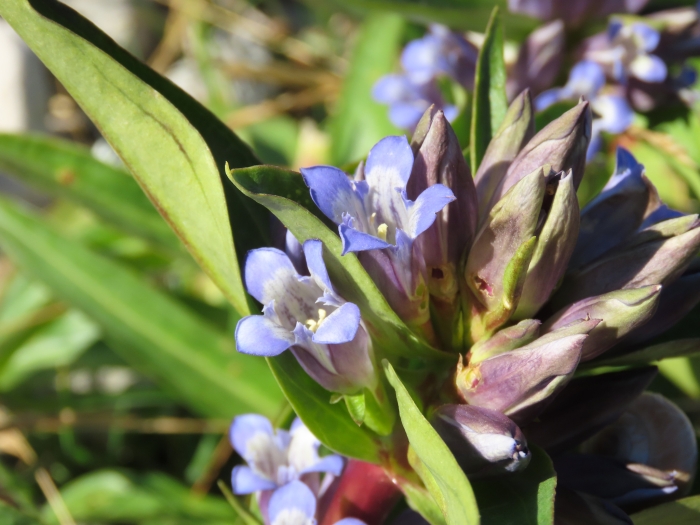Cross Gentian
(Gentiana cruciata)
Cross Gentian (Gentiana cruciata)
/
/

Emanuele Santarelli
CC BY-SA 4.0
Image By:
Emanuele Santarelli
Recorded By:
Copyright:
CC BY-SA 4.0
Copyright Notice:
Photo by: Emanuele Santarelli | License Type: CC BY-SA 4.0 | License URL: http://creativecommons.org/licenses/by-sa/4.0/ | Rights Holder: Emanuele Santarelli | Publisher: iNaturalist | Date Created: 2020-07-26T18:35:48-07:00 |






















Estimated Native Range
Summary
Gentiana cruciata, commonly known as Cross Gentian, is an herbaceous perennial native to a range of habitats including subalpine meadows, grassy slopes, and forest clearings across most of Europe and Western Asia. It typically grows to a height of 8-16 inches with erect, unbranched stems and large, ovate-lanceolate leaves that form a basal rosette. The striking violet-blue, trumpet-shaped flowers are borne in terminal clusters and are highly attractive to pollinators, blooming from June to August. The flowers are quite showy, with a cross-like pattern formed by the folds of the corolla, which gives the plant its common name.
Cross Gentian is valued for its vibrant blue flowers and is often used in rock gardens, alpine collections, and as a border plant in garden settings. It prefers full sun to partial shade and requires well-drained, neutral to alkaline soil, typically found in its native limestone-rich mountainous regions. While it has specific soil requirements, once established, it is relatively low maintenance. However, it can be susceptible to root rot if overwatered or planted in poorly drained soils. Cross Gentian is not known for aggressive roots or significant disease problems, but it can be difficult to grow in non-ideal conditions, which should be considered by gardeners.CC BY-SA 4.0
Cross Gentian is valued for its vibrant blue flowers and is often used in rock gardens, alpine collections, and as a border plant in garden settings. It prefers full sun to partial shade and requires well-drained, neutral to alkaline soil, typically found in its native limestone-rich mountainous regions. While it has specific soil requirements, once established, it is relatively low maintenance. However, it can be susceptible to root rot if overwatered or planted in poorly drained soils. Cross Gentian is not known for aggressive roots or significant disease problems, but it can be difficult to grow in non-ideal conditions, which should be considered by gardeners.CC BY-SA 4.0
Plant Description
- Plant Type: Herb
- Height: 1-1.5 feet
- Width: 0.5-1 feet
- Growth Rate: Slow, Moderate
- Flower Color: Blue, Purple
- Flowering Season: Spring, Summer
- Leaf Retention: Deciduous
Growth Requirements
- Sun: Full Sun, Part Shade
- Water: Medium
- Drainage: Medium
Common Uses
Bee Garden, Border Plant, Butterfly Garden, Low Maintenance, Rock Garden
Natural Habitat
Native to subalpine meadows, grassy slopes, and forest clearings across most of Europe and Western Asia
Other Names
Common Names: Cross Gentian
Scientific Names: , Gentiana cruciata,
GBIF Accepted Name: